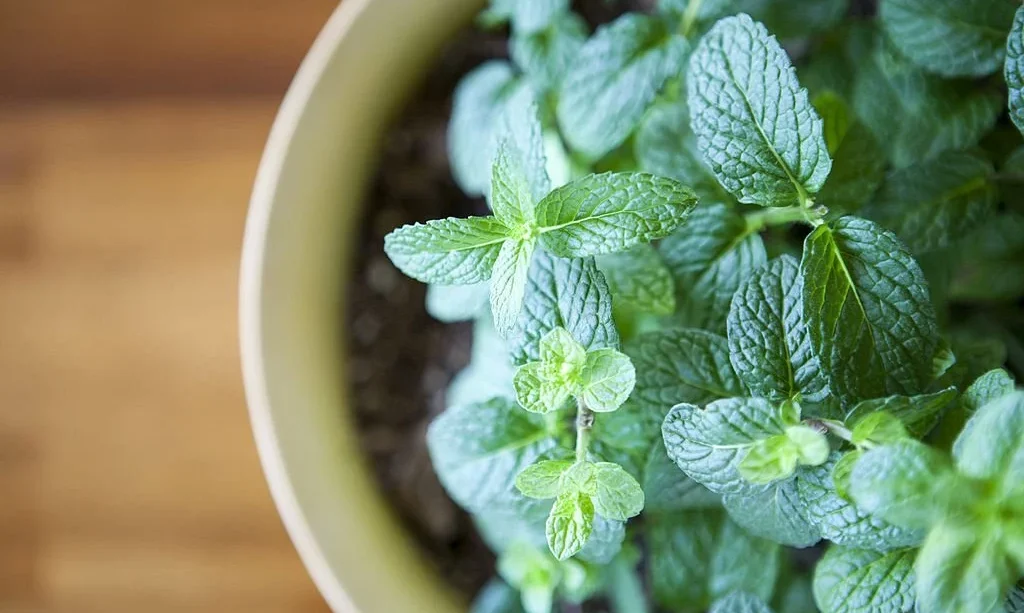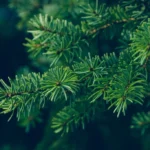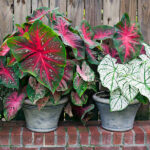Ah, the refreshing scent and delightful taste of mint plants. They add a burst of flavor to our culinary creations and provide soothing herbal remedies. But what happens when your beloved mint plant starts to wither and fade away? It’s disheartening to see a dying mint plant, but fear not! In this simple guide, we’ll explore the reasons behind a struggling mint plant and how to revive it. Let’s uncover the signs of a dying mint plant and take action to save it.
- Package contains 50 organic herb fertilizer spikes and are produced to avoid wasteful runoff, mess, hazards and smells
- Formulated with a 4-3-3 NPK to ensure a continuous supply of nutrients below the surface, where the plants active roots are growing
- Jobe’s organic fertilizer spikes contain no synthetic chemicals and are OMRI listed for organic gardening by the USDA
- Application is simple and should be done at the time of planting or early in the growing season
- Jobe’s fertilizer spikes are pre-measured to provide the right amount of nutrients for herbs without risk of over fertilizing
Signs of a Dying Mint Plant
A dying mint plant displays several visible signs of distress that shouldn’t be ignored. Look out for these telltale indicators:
- Yellowing Leaves: If your mint plant’s once vibrant green leaves turn yellow or pale, it’s a sign that something is amiss.
- Wilting or Drooping: A struggling mint plant may exhibit wilting or drooping leaves that lack their usual perky appearance.
- Stunted Growth: A lack of new growth or slow development compared to healthy mint plants can indicate a decline in the plant’s overall health.
- Leaf Drop: Leaves falling off the mint plant prematurely or in large quantities suggest an underlying issue affecting its vitality.
Recognizing these signs early is essential for taking appropriate action to revive your mint plant. With a little care and attention, you can bring it back to its vibrant and thriving state.
In the next sections, we’ll delve into the common reasons behind a dying mint plant and explore possible solutions to rescue it. Don’t give up on your mint plant just yet—it may just need some extra TLC!
Common Reasons for Mint Plant Decline
When your mint plant starts to decline, it’s essential to identify the underlying reasons. Here are some common culprits behind a struggling mint plant:
- Lack of Water: Inconsistent or inadequate watering can cause mint plants to wither. Mint plants require moist soil, and if they don’t receive enough water, they may start to decline.
- Overwatering: On the flip side, overwatering can lead to root rot and suffocate the plant’s roots. Excessive moisture prevents oxygen from reaching the roots, causing wilting and eventual death.
- Insufficient Sunlight: Mint plants thrive in bright, indirect sunlight. If your mint plant is not receiving enough sunlight, it may become weak and leggy, leading to a decline in health.
- Nutrient Deficiencies: Mint plants require proper nutrition to grow vigorously. A lack of essential nutrients, particularly nitrogen, can cause stunted growth, yellowing leaves, and overall decline.
- Pests and Diseases: Mint plants can fall victim to various pests like aphids or diseases like powdery mildew. These intruders weaken the plant and contribute to its decline.
Diagnosis and Solutions
To revive your struggling mint plant, follow these steps for diagnosis and solutions:
- Observe the Plant: Take a close look at your mint plant to identify any visible issues, such as wilting, discoloration, pests, or signs of disease. This will help determine the appropriate action to take.
- Watering Assessment: Evaluate your watering routine. Make sure you provide consistent moisture to the mint plant without overwatering. Allow the top inch of soil to dry slightly between waterings.
- Sunlight Evaluation: Assess the mint plant’s exposure to sunlight. Ensure it receives at least 4-6 hours of direct or bright indirect sunlight each day. If necessary, relocate the plant to a sunnier spot.
- Nutrient Boost: Consider applying a balanced fertilizer or organic compost to replenish essential nutrients. Pay attention to nitrogen levels to promote healthy growth and green foliage.
- Pest and Disease Management: Inspect the mint plant for signs of pests or diseases. If you spot any, take appropriate measures to control or treat the infestation. Use organic pest control methods whenever possible.
Remember, prevention is key. After reviving your mint plant, implement preventive measures like proper watering, providing sufficient sunlight, and regular maintenance. Prune damaged leaves, maintain good hygiene, and monitor for any signs of pest or disease recurrence.
In the next section, we’ll explore additional preventive measures to ensure the long-term health of your mint plant.
- 🌳 SUPPORT YOUR INDOOR HERB’S GROWTH – Give your plants the nourishing environment it needs to thrive! This premixed, ready to use soil blend is made up of premium non-organic all-purpose soil.
- 🌳 FIT FOR ALL INDOOR HERB PLANT VARIETIES – Basil, Thyme, Rosemary, Oregano, Mint, Parsley, Sage. Our premium soil won’t disappoint. It maximizes fertilizer absorption and provides excellent aeration to the roots.
- 🌳 PROMOTES OPTIMUM DRAINAGE – Our soil mix holds an adequate amount of moisture to meet the plant’s needs, yet still allows the water to drain well. This helps prevent over-watering.
- 🌳 GET MORE FOR YOUR MONEY – With 2.2 quarts in every bag, our soil offers you great value compared to many other options on the market. It also comes in a sturdy, resealable bag.
- 🌳 BUY WITH CONFIDENCE – Our soil blend is MADE IN THE USA. If you are not satisfied with what you receive, let us know and we’ll arrange a refund or replacement immediately.
Preventive Measures
To maintain the health and vigor of your mint plant, consider these preventive measures:
- Proper Watering: Water your mint plant consistently and avoid both underwatering and overwatering. Aim to keep the soil evenly moist, allowing it to slightly dry between waterings.
- Sunlight Exposure: Ensure your mint plant receives sufficient sunlight. Place it in a location where it can bask in at least 4-6 hours of direct or bright indirect sunlight each day.
- Regular Maintenance: Engage in regular maintenance practices for your mint plant. This includes pruning to remove damaged or withered leaves and promoting new growth. Maintain good hygiene by keeping the plant and its surroundings clean.
- Nutrient Balance: Keep your mint plant nourished with balanced nutrition. Consider using a slow-release fertilizer or organic compost to provide essential nutrients. Pay attention to nitrogen levels to promote lush green foliage.
- Pest and Disease Prevention: Monitor your mint plant regularly for signs of pests or diseases. Take preventive measures such as using insecticidal soap or natural repellents to discourage pests. Ensure good airflow around the plant to prevent fungal infections.
Remember, prevention is easier than revival. By implementing these preventive measures, you can create a favorable environment for your mint plant to flourish.
Conclusion
Seeing your mint plant decline can be disheartening, but with proper care and attention, you can revive it and prevent future problems. By identifying the reasons behind the decline and taking appropriate action, such as adjusting watering practices, providing sufficient sunlight, and addressing nutrient deficiencies, you can bring your mint plant back to life.
Remember to closely observe your mint plant for any signs of distress, including wilting, discoloration, or pest infestations. Prompt diagnosis and intervention are key to saving a struggling mint plant.
By implementing preventive measures, you can ensure the long-term health of your mint plant. Proper watering, adequate sunlight exposure, regular maintenance, nutrient balance, and pest and disease prevention will help your mint plant thrive.
So, don’t give up on your mint plant just yet! With a little care and attention, you’ll soon be enjoying the fresh aroma and flavors of your thriving mint plant once again.







